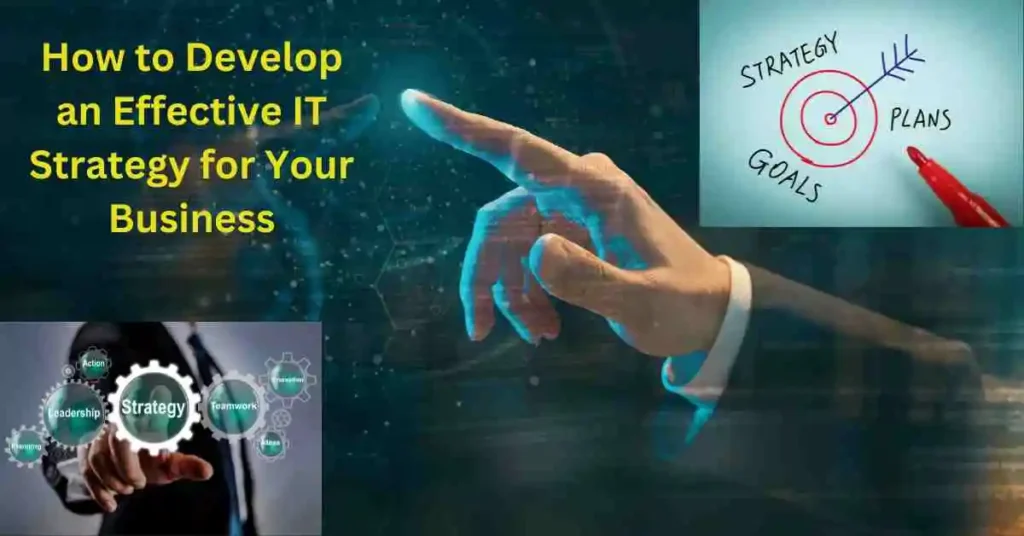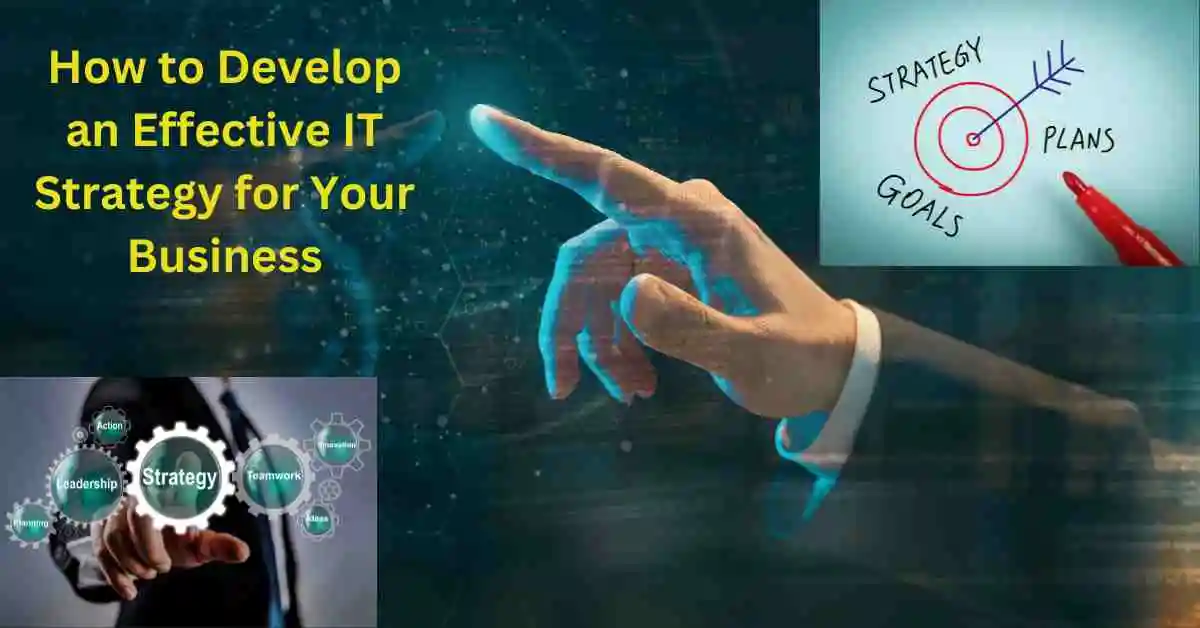Develop an Effective IT Strategy for Your Business
As technology continues to evolve at a rapid pace, businesses that fail to embrace new trends and tools risk being left behind. That’s why crafting an effective IT strategy is critical for any modern organization. In this ultimate guide, we’ll cover everything you need to know to create a winning IT strategy for your business, including tips, tools, and best practices.

Define Your Goals and Objectives
Before you begin creating your IT strategy, it’s essential to understand what you hope to achieve. What are your business’s key goals and objectives, and how can technology help you achieve them? Whether you’re looking to improve customer service, boost productivity, or increase sales, defining your goals is the first step in creating a successful IT strategy.
Assess Your Current IT Infrastructure
Once you know what you want to achieve, it’s time to assess your current IT infrastructure. What hardware and software are you currently using, and what gaps do you need to fill? How well is your IT department performing, and what improvements could be made? By conducting a thorough assessment, you’ll gain a clear understanding of what changes need to be made to achieve your goals.
Identify Key Stakeholders
Creating an effective IT strategy requires input from a range of stakeholders, including IT staff, business leaders, and end-users. Identify the key people who will be impacted by your strategy and involve them in the planning process from the outset. This will ensure that everyone’s needs are taken into account and that your strategy is more likely to be successful.
Create a Roadmap
Once you’ve identified your goals, assessed your current infrastructure, and engaged with stakeholders, it’s time to create a roadmap for achieving your objectives. This should include a detailed plan of the technology changes you’ll need to make, along with timelines, budgets, and metrics for measuring success. Be sure to break your roadmap down into manageable chunks, so you can track progress and make adjustments as needed.
Embrace New Technologies
In order to remain competitive, it’s important to embrace new technologies as they emerge. This could include cloud computing, artificial intelligence, or the Internet of Things, depending on your business’s needs. By staying abreast of the latest trends and tools, you’ll be better positioned to take advantage of new opportunities and gain a competitive edge.
Train Your Staff
Even the most cutting-edge technology is useless if your staff doesn’t know how to use it. That’s why it’s important to invest in training and development programs that help your staff acquire the skills they need to use new tools and systems effectively. This will not only improve productivity but also increase staff satisfaction and retention.
Monitor and Evaluate Your Strategy
Finally, it’s important to monitor and evaluate your IT strategy on an ongoing basis. This will help you identify areas where you’re succeeding, as well as areas where you need to make improvements. Regular evaluation will also ensure that your strategy remains aligned with your business’s goals and objectives and that you’re on track to achieve them.
Staying Ahead of the Curve
The business landscape is constantly evolving, and staying ahead of the curve is crucial for success. By embracing new technologies and developing an effective IT strategy, you can position your business to thrive in a rapidly changing environment. Remember to define your goals, assess your current infrastructure, involve key stakeholders, create a roadmap, embrace new technologies, train your staff, and monitor and evaluate your strategy on an ongoing basis.
Implement Your IT Strategy
Once you have developed your IT strategy, it is time to implement it. This will involve deploying new technology, systems, and processes, as well as training staff on their use. You should also establish metrics for measuring the success of your IT strategy and track progress regularly.
In the end, the key is to remain flexible and be willing to adapt to new trends and technologies. With the right approach, your IT strategy can help drive your business forward and position you for success in the years to come.
Conclusion
Developing an effective IT strategy is crucial for the success of your business in today’s digital age. By following the steps outlined in this article, you can develop an IT strategy to help you achieve your objectives and goals. Remember to assess your current IT environment, define your objectives and goals, develop your IT strategy, implement it, and continuously monitor and evaluate its performance. By doing so, you can stay competitive and achieve long-term success in your industry.
FAQS
What is an IT strategy framework?
An IT strategy framework is a structured and systematic approach that outlines the steps and processes for creating an effective IT strategy. It typically includes components such as analysis of current IT infrastructure, identification of business objectives, prioritization of IT initiatives, and evaluation of risks and opportunities.
What are the 4 main points of IT strategic planning?
The four main points of IT strategic planning are as follows:
1. Assessment of the current IT environment
2. Identification of business objectives and IT alignment
3. Development of a plan for implementation
4. Ongoing evaluation and adjustment of the plan
What are the IT strategy approaches?
There are various IT strategy approaches, including the top-down approach, bottom-up approach, and collaborative approach. The top-down approach involves setting IT strategy at the executive level and cascading it down to lower levels of the organization. The bottom-up approach involves developing IT strategy based on the needs and input of front-line employees. The collaborative approach involves collaboration between executives, IT staff, and other stakeholders to develop IT strategy.
How do you develop an effective IT strategy?
Developing an effective IT strategy involves several steps, including:
1. Assessing the current IT environment and identifying strengths and weaknesses
2. Aligning IT strategy with business objectives
3. Identifying and prioritizing IT initiatives based on business needs and available resources
4. Developing a plan for implementation, including timelines and budgets
5. Ongoing evaluation and adjustment of the plan based on results and changing business needs.
What is an IT strategic roadmap?
An IT strategic roadmap is a visual representation of the plan for implementing IT strategy over a specific period of time, typically three to five years. It outlines the key initiatives, timelines, and dependencies necessary to achieve the desired outcomes. The roadmap helps to align stakeholders around a shared vision and provides a framework for measuring progress and success.

